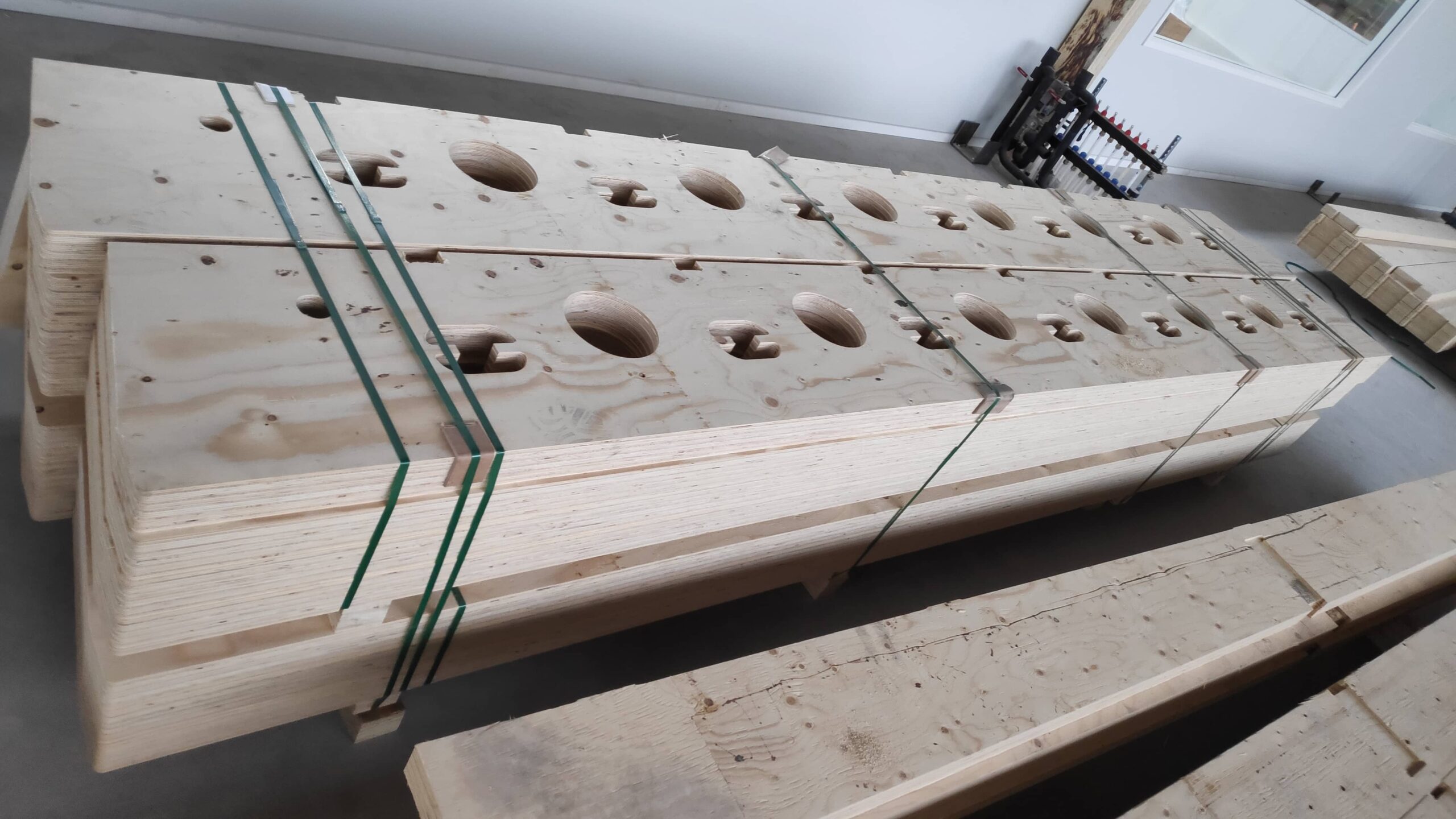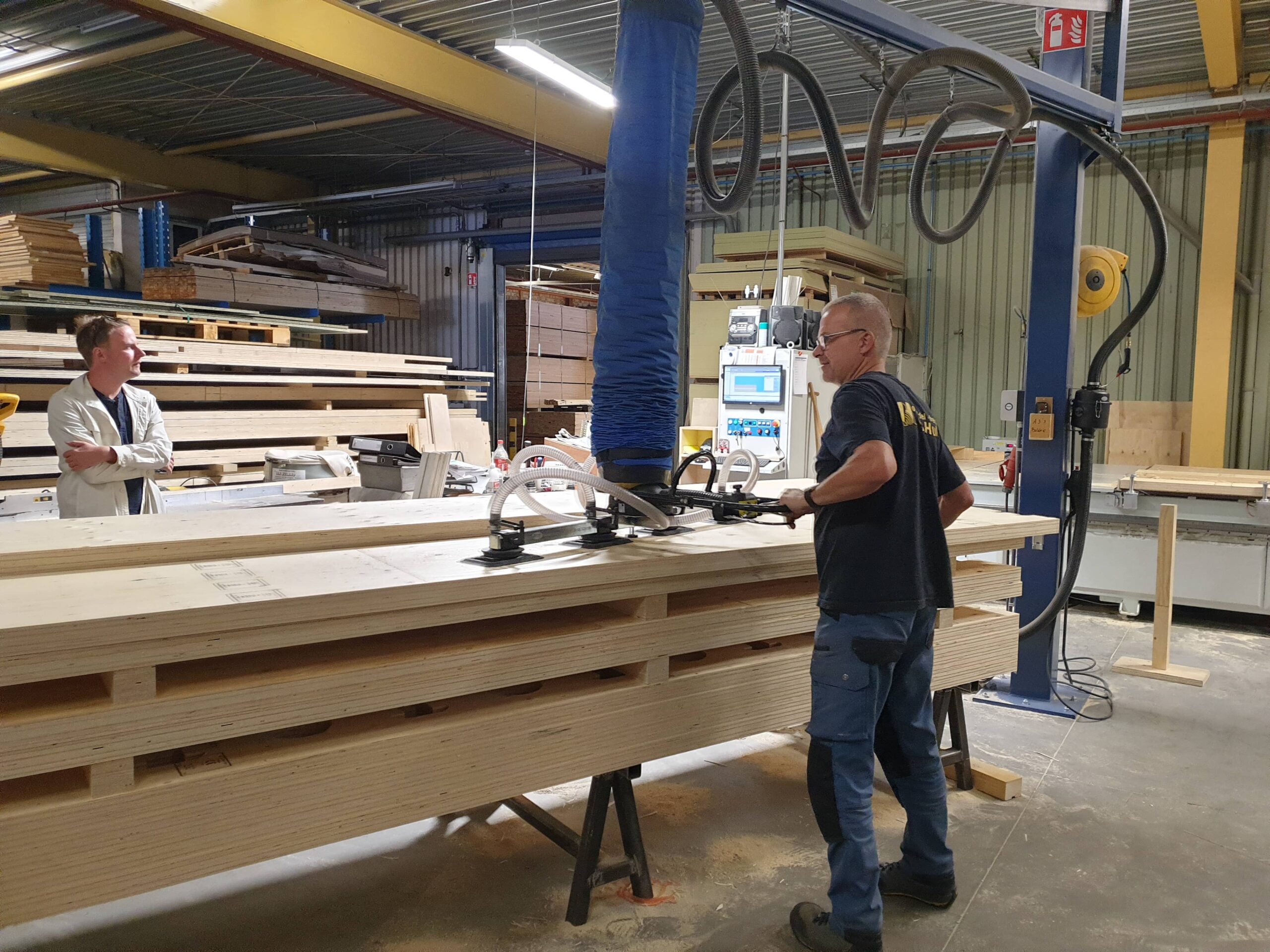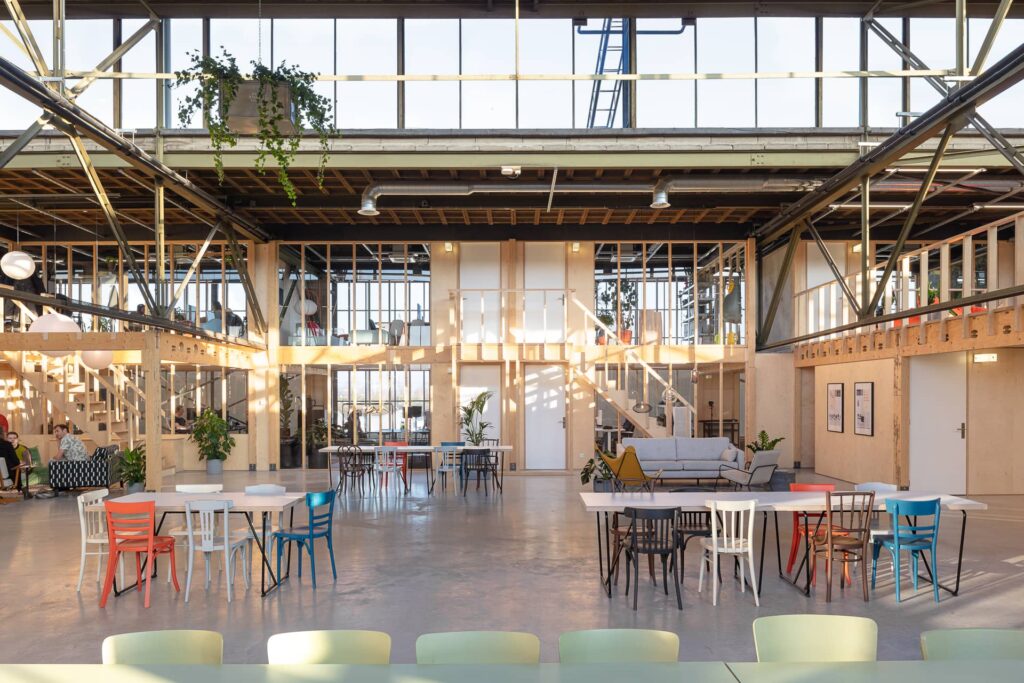Respace is a circular wood construction system that quickly, easily, cheaply and sustainably transforms empty buildings into spaces for living and working. The Respace building system has been developed with circularity and flexibility in mind. The wooden elements are easy to disassemble. Therefore rooms can be redesigned, or the elements can be reused in another location to create new spaces. In this way, new living spaces can be created within vacant buildings without the need for additional building land.
More than 15 tons of CO2 are stored in the materials of the skeleton of The Exploded View.
Made of
The Respace elements consist of 95% biobased materials.
- 76.8% of laminated veneer lumber (LVL) from Finland
- 16.9% from durelis wood from Belgium
- 5.7% from birch wood from Russia
- The 0.5% non-biobased materials used are steel from the Netherlands
Production Process
- The mature trees are cut down and young trees are planted in their place.
- The cut wood is peeled and laminated into LVL boards.
- The Respace elements are milled from the LVL sheets with as little loss of material as possible.
- The elements are assembled into a building structure with as few screw connections as possible.
- Afterwards, the structure can be disassembled and reassembled again with help of our material passport database.


Application
The Respace building system is used for the transformation of existing buildings to create new living spaces. From church to affordable housing, from harbor warehouse to co-working spaces, and from industrial monumental factory halls to apartments. Sustainable places to live, work and live. Respace has been used in the transformation of the Werkspoorfabriek in Utrecht and the Kabeldistrict in Delft. The first was nominated in 2020 for Building and Office Building of the Year.

Environmental impact
- CO2 is stored in the Respace elements.
- The main material used in the Respace elements is LVL, which stores 789 kilograms of CO2 per m3.
- New young trees are planted for the trees that are cut to make the elements. Young trees absorb more CO2 than older trees, so this provides extra CO2 storage.
- The elements are ultimately fully compostable and contain no harmful substances.
Good to know
Creating living spaces from wood is healthier than using regular building materials. And because the Respace elements are lightweight, the use of heavy artillery is not necessary during assembly. As a result, full-electric work can be done during the assembly of the system.
Growth opportunitie
In the Netherlands alone, 30 million square meters of real estate are vacant, part of which can be transformed into residential, work and other living spaces with Respace. The major housing shortage can be tackled with this, but also the realization of asylum centres, generation-proof homes, new workplaces and hotels. A challenge is that developers, architects and administrators with guts are needed to realize transformation projects with this new building system.
